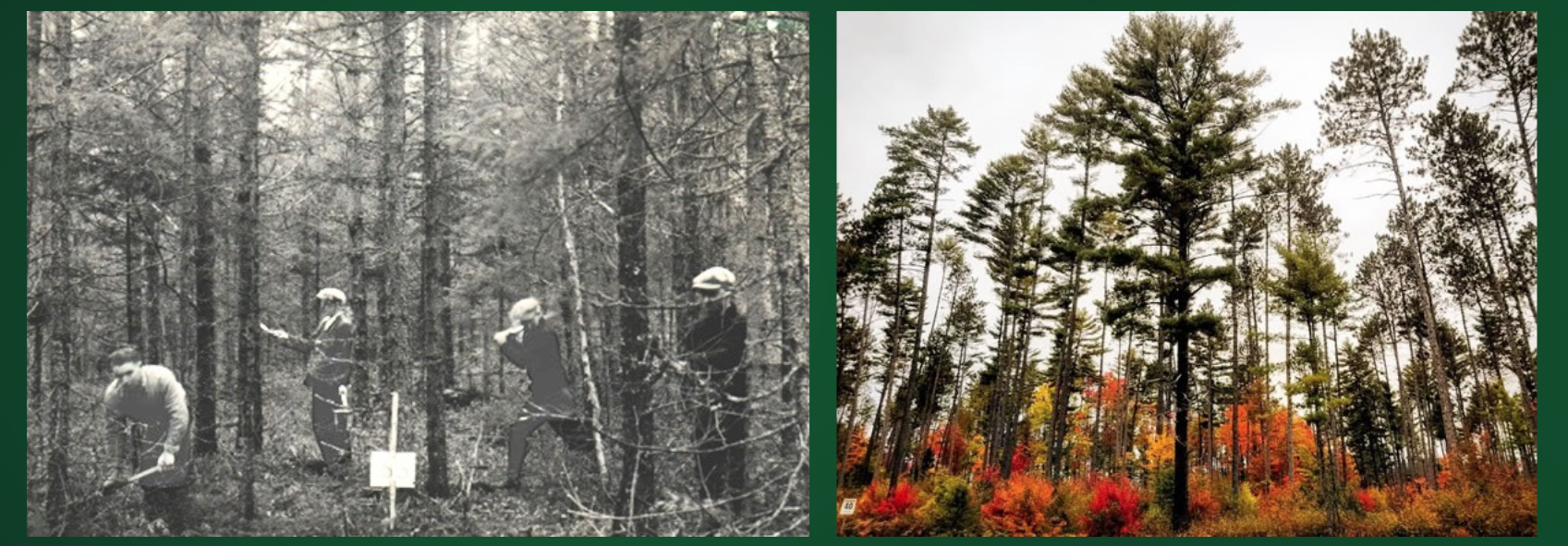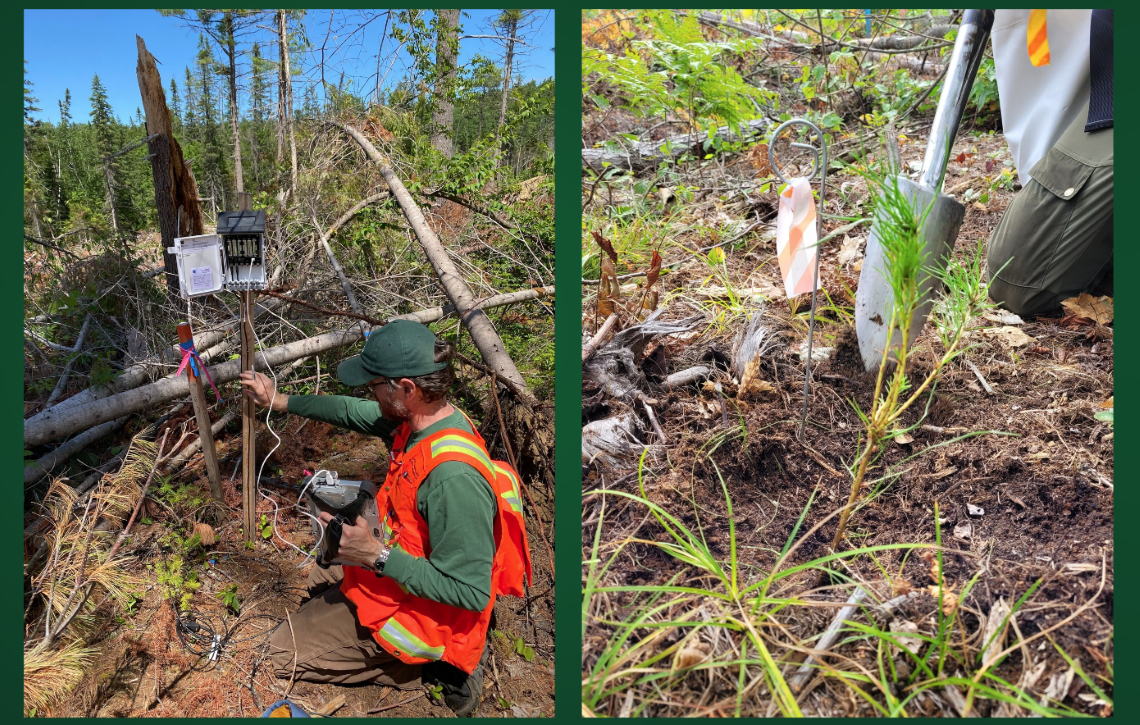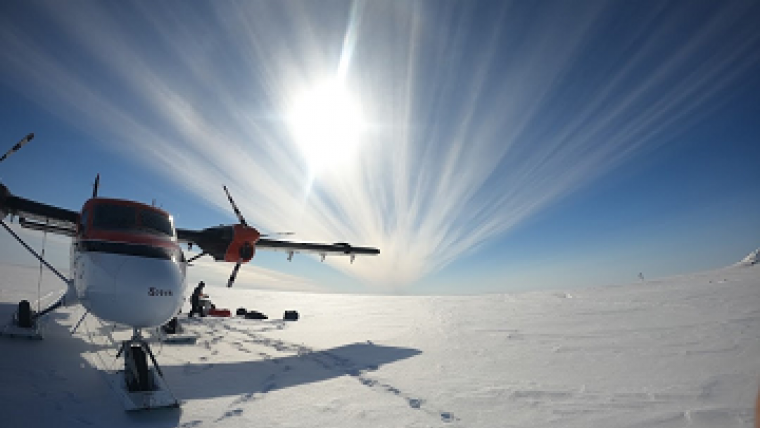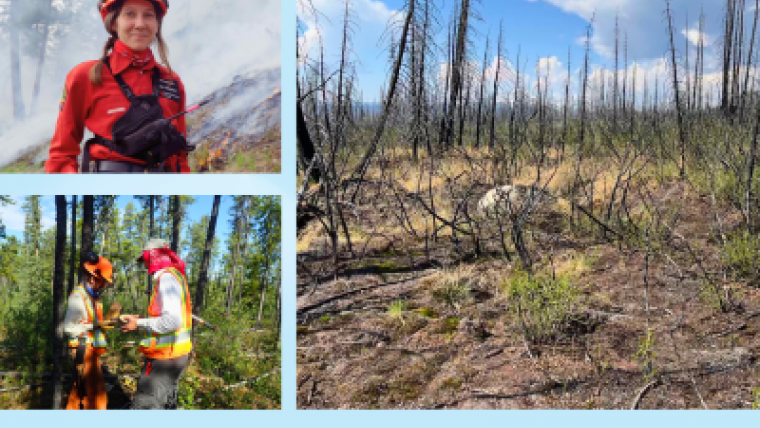A beginner’s guide to Canada’s research forests: A legacy of living laboratories
For nearly a century, Canada’s research forests have evolved from their early roots in commercial forestry, branching out to become dynamic hubs of scientific exploration addressing some of the most urgent questions of our time.
In the early 1900s, young men hired by the federal government to plant seedlings were probably serving forest companies, but their efforts laid the foundation for what would become Canada’s research forests. These living laboratories have since become essential to a wide range of scientific studies. Today, forestry science is more diverse than ever before.

Ecologists and plant scientists measure tree growth, soil health and nutrient cycles. Physical scientists use drones and satellites to monitor tree heights, above-ground biomass and carbon. Other scientists explore how forests respond to a changing climate and measure carbon dioxide levels in experimental plots. Then there’s research that focuses on plant genetics, reforestation and novel approaches to battle pests, both native and exotic.
Welcome to the ever-evolving world of forestry science, where Canada’s research forests are at the forefront of discovery and innovation.
Roots run deep, branches reach high
Natural Resources Canada (NRCan) through the Canadian Forest Service (CFS) maintains two major research forests: the Acadia Research Forest (ARF) in New Brunswick covering 9,000 hectares of mixed forest and the Petawawa Research Forest (PRF) in Ontario with 10,000 hectares of forest, lakes and wetlands and more than 2,000 research plots. At first glance, these research forests might look like quiet stretches of wilderness where roots run deep and branches reach high, but they are actually bustling hubs of scientific activity.
One of the roles of the CFS is to answer questions, and our research forests play a significant role in addressing pressing issues from industry, government and the public,” explains Bernard Daigle, knowledge transfer specialist with the Atlantic Forestry Centre, which manages the ARF. With 39 years at the Centre, Bernard has witnessed first-hand the evolution of forestry research. “We focus on what matters most, striving to find answers that help policymakers make informed science-based decisions.”
And while each research forest may have a slightly different focus, they work toward answering critical questions — questions with real-world implications.
Canadian forests and climate change
Consider the research taking place at Petawawa Research Forest in Ontario, which is overseen by NRCan’s Canadian Wood Fibre Centre. Established in 1918, it’s Canada’s oldest continuously operating research forest and home to some of the oldest permanent sample plots in the country. “We have thousands of research plots in the forest, along with many silviculture trials,” says research scientist Trevor Jones. Silviculture, the practice of growing and managing trees and forests, is central to their work.
One ongoing experiment at Petawawa is exploring how climate-smart silviculture can help forestry practices adapt to a changing climate — specifically, in hotter, drier conditions. The team has harvested several forest areas and planted a variety of pine and oak species, with some from warmer, drier climates, so they can see how they perform in a cooler environment. While Trevor and his team are able to measure the seedlings as early as this year, this isn’t just a short-term study; it’s designed to span 20 to 30 years, allowing scientists to observe the trees’ life cycles. Researchers will monitor and measure the growth and survival rates of the seedlings every year or two.

Clearly, the goal isn’t just about sustainable forestry harvests anymore or understanding tree improvements or how to produce the best timber. “Now, it’s more about understanding the entire envelope, or ecological limits, of these tree species and animal populations, the understory vegetation and all aspects of the biological web and how climate change impacts all of them,” explains Adam Dick, director of strategic operations with the CFS. His work involves both research forests.
The value of a long-term approach
The Acadia Research Forest, established in 1933, is home to some of Canada’s oldest documented forest research studies. Remarkably, seedling experiments started 1923 are still being continued today, still offering valuable insights for scientists.
When Adam joined CFS as a scientist and forest research project leader in 2018, one of his first goals was to establish a base of forest inventory plots at Acadia. “This way, whenever someone has a scientific question they want to answer, we have ground truthed information ready to go,” he says, referring to data or knowledge that is considered accurate, verified and directly observed in the real world. As a result, ARF showcases science in action, providing exciting opportunities for knowledge exchange, technology transfer and collaboration.
Today, there are over 360 ground inventory plots. “There’s a plethora of data here,” Adam notes. “These plots are essentially ready-made for researchers looking to explore specific questions. You can start looking into answers here right away and build on top of them with additional data to answer specific questions.”
One particularly intriguing aspect of Acadia is its unexpected contributions to climate research. Many of the older stands weren’t originally designed as climate experiments, but over time, they’ve become crucial to climate change research. For example, in the 1960s and 70s, a wide range of black spruce seedlings were planted. Each one was tagged, and now there’s row upon row of black spruce grown with seed collected from sources ranging from Newfoundland to Alaska — ready for new research.
“We can observe how our climate has changed and how these species have adapted to Fredericton’s evolving conditions,” Adam explains. “Because these plots were carefully maintained and someone had the foresight to establish them to answer a different question, we can still gain valuable insights for today’s challenges.”
That’s definitely the case for CFS research scientist Funda Ogut, who works in the fascinating field of quantitative genetics and genomics. Her research focuses on predicting the genetic merit of individual trees for growth and adaptability by using molecular marker data, genomic selection. One of her main goals is to combine advanced genotyping and phenotyping tools to accelerate tree breeding and rapid response to climate change.
A key part of her work is exploring how trees respond to various climate stressors. This is where the ARF genetic provenance trials — established before Funda was born — play a vital role. “Genetic field trials are like living archives or libraries,” she says. “And depending on the knowledge gap, we can revisit them.” They allow her to assess trees of all ages for different growth and adaptive traits at different test sites. These trials help her understand how genetic variance influences the phenotype of trees and how different genotypes interact with their environments in the context of the “right tree at the right place”. This will help inform tree breeders when selecting populations.
The tree ring analysis from collected wood cores of mature trees can be used to determine how the growth responses of trees relate to extreme climate events such as drought and frost in real world conditions.
This new information could help accelerate breeding programs and speed up the selection of more resilient tree varieties. None of this research would be possible without access to these invaluable long-term research plots.
A future rooted in the past
As long as there are forests and trees, forestry science will continue to evolve. Just as those early 20th-century tree planters couldn’t have predicted the challenges we face today, it’s impossible to foresee the exact concerns of the next century. “I think that — in a time of climate change and the potential impact it can have on our diverse ecosystems — it’s more important than ever that we have this legacy of knowledge,” says Adam. And with the enduring value of research forests there will be a secure place to conduct scientific research.
You can keep up with the latest groundbreaking forestry research at the Canadian Forest Service by checking out the links below.
Discover more:
The State of Canada’s Forests Annual Report
Helping forests adapt to climate change (Simply Science video)
Page details
- Date modified:


